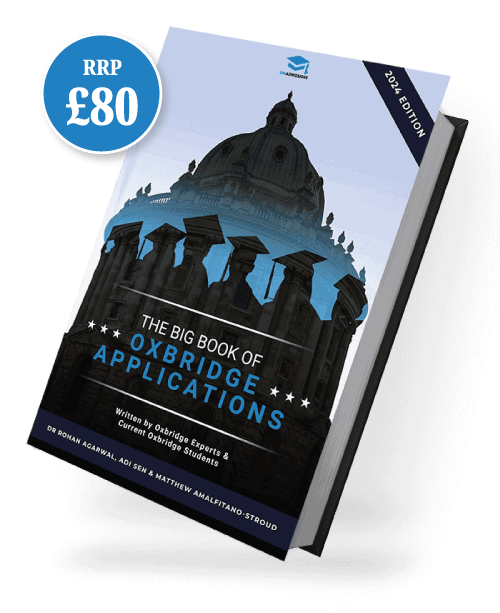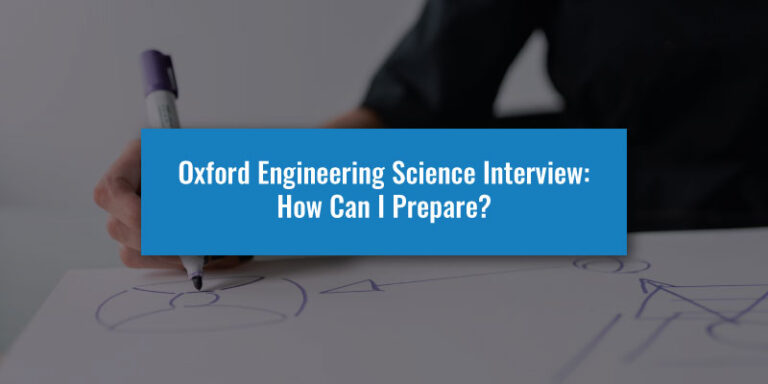The University of Oxford uses the PAT as part of its admissions process for a number of subjects.
But what is the PAT and why do you have to sit it? In this guide, we go over everything you need to know for the PAT, including the format, scoring and important dates that you need to know. Let’s get started!
What Is The PAT?
The Physics Aptitude Test (PAT) is a subject-specific Admissions Test used at the University of Oxford.
It must be taken by all students applying to Physics, Engineering and Material Science at Oxford. If you are applying to a Physics ‘joint school’ (any course with a title of ‘Physics and [subject]’ such as Physics and Philosophy) then you will also have to sit the PAT.
Though the PAT was originally run internally at the University of Oxford, responsibilities for delivering the exam were moved to Pearson VUE in 2024. Pearson VUE is a company that specialises in computer-based testing, so it is likely that the PAT will change from a paper-based test to an online one. Applicants will need to take the test at a dedicated Pearson VUE testing centre.
It is worth going through the PAT syllabus to identify any areas you have not covered at school, and independent study may be necessary.
The main thing to remember when looking at the syllabus is that knowing the content is only half the challenge. What sets the PAT apart is the way it asks you to apply the content in new or unusual contexts. This is why practising with questions and past papers is so important as part of your preparation.
Early preparation is the key to a successful Oxford Engineering application.
Writing the perfect Personal Statement, scoring highly on the PAT and interviewing like a pro is how you get your dream Oxford Engineering offer.
Discover our Engineering Programme for comprehensive admissions support by clicking the button below to enrol and triple your chances of success.
Why Do I Have To sit the PAT?
It also throws in questions to test your problem-solving skills and creative thinking ability.
This is because, for Oxford, competition for places is very high and so the test and Interview gives Oxford extra information to distinguish applicants who generally have very similar academic credentials.
What Does The PAT Actually Test?
As you will hopefully be expecting, the Physics Aptitude Test is first and foremost, a test of Physics with a large amount of Maths too.
Like other aptitude tests, it is primarily designed to test the way that an applicant thinks and uses logic to reach solutions to problems. So, as well as measuring the conceptual understanding of Physics, the exam is also a broader assessment of aptitude.
It is important to recognise that you cannot simply use A-Level revision as preparation for this Admissions Test. It requires separate attention as you need to answer questions in the context of the PAT, which may have a different format and question style than your other exams.
What Is The Format Of The PAT?
The PAT is a two-hour exam, which includes questions on Maths and Physics. Unusually, though the Maths and Physics questions are mixed together.
In 2025, the test will be computer-based and comprised entirely of Multiple-Choice Questions. There are 40 questions included in the test, which make up 100 marks in total.
This a major change compared to previous PAT papers, which were primarily paper-based and featured two additional types of questions; Written Questions and Multi-Part Questions (longer written questions split into separate, individually marked parts). These questions required applicants to show their process in order to gain full marks, but these questions were likely removed due to their complex nature and the limitations of the computer testing format.
While the test format and question types have changed, the syllabus has not. The PAT syllabus highlights all of the required knowledge (knowledge that can be included in the test) and is essential to read carefully early in to your preparation.
Calculators are permitted for the PAT. While you can’t bring your own, a digital calculator is included in the testing system that houses the PAT. This is just one major difference between the PAT and the equivalent exam at Cambridge, the ESAT.
When Do I Take The PAT?
PAT registration and testing are all handled by Pearson VUE, so you will need to book your test via its online system. These are the important dates you need to be aware for your exam.
PAT Testing Dates
- 15th August – 4th October 2025 – Registration dates
- 22nd – 23rd October 2022 – Test date
(PAT scores are sent to colleges automatically and students can request further feedback from the college they applied to).
For the 2024 applicants looking to secure 2025 entry, PAT testing will take place on the 28th October 2024. This differs from previous years which has seen testing occur over a period of roughly 10 days.
How Much Does The PAT Cost?
The PAT doesn’t have any fee attached, so you can sit the test for free.
Access "The Big Book Of Oxbridge Applications" For FREE
The PAT is important, but there’s a lot more to learn about the Oxford application process. Discover everything you need to know in The Big Book Of Oxbridge Applications, available for free here! Through over 350 pages, you will find:
- Over 40 admissions test practice questions
- 28 example Oxbridge Personal Statements
- Interviews with Oxbridge students and graduates
- Additional downloadable resources
Fill in your details below to claim your digital copy today!

What Score Do I Need?
In total you have 100 marks available, and 120 minutes in which to get them. So, if you want to leave yourself time to read questions through and review your solutions and any skipped questions at the end, you should be aiming for about a mark per minute.
In general, you want to be in the 1/3rd of applicants to make sure you get offered an Interview, so aiming for a score of 60 is a far more achievable target.
Results for the PAT are not automatically published but they can be requested as part of the feedback process.
Admissions tutors will receive the results of all tests directly in time to make their shortlisting decisions in November.
How To Prepare For The PAT
Look over a range of past papers to help to familiarise you with the format of the test and the content covered. Oxford also publishes reports for each test; reports contain information such as the average mark on the paper and the mark students needed to achieve an Interview. Do not expect to get all of it correct – most years the average is 50-60%.
Familiarise yourself with the syllabus. The material is aimed at AS level maths and physics plus knowledge of material covered at GCSE. However, we cannot guarantee when the material will be covered in your school so you might find you need to teach yourself a few topics before the exam.
Get practice doing some problem solving/hard physics questions which are not A-Level questions. It is advisable to do questions from a range of other sources, not just A level type questions which can be more structured in nature than the PAT.
Try doing some questions under timed conditions. One of the things which students who have taken the test say is hard is the number of questions you need to do in only 2 hours. Practising some questions under timed conditions near the date of the exam will mean you are more likely to get to the end of the paper.
Conclusion
You should now have a better idea of what the PAT is, and begin preparing for the Admissions Test.
The Oxford application process is highly competitive, and the PAT is an effective way for the Admissions Tutors to gauge a realistic representation of you.
It’s best to think of the Admissions Test as another opportunity to show the Admissions Tutors how impressive your Maths and Physics skills are rather than as another hurdle.
Our expert tutors will guide you to Oxford Engineering success.
Applying to Oxbridge is immensely competitive, and you must give yourself the best chance of success. We help you craft the perfect Personal Statement, achieve a highly competitive PAT score and teach you how to Interview effectively – covering all areas of your Oxbridge application.
Discover our Oxford Engineering Premium Programme for comprehensive admissions support by clicking the button below to enrol and triple your chances of success.







